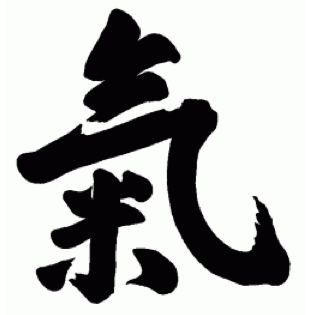Overcoming Obstacles to Practice
This is the first post in a series. It was originally written as an article about Kokikai Aikido, but the ideas could apply, more or less, to meditation, yoga, or, well, life.
---
Recently an aikido student wrote from Japan where he was on an extended trip. He was taking a calligraphy class and he asked the teacher, “How should I do this brush stroke?” She answered, “Boldly!”
The calligraphy teacher was using aimaisa. In Japanese, aimaisa means something like “vagueness,” or “ambiguity.” If the teacher had used descriptive words like “with a downward stroke,” or “thin at the top, fat at the bottom,” the student would have focused on trying to make his work look correct. She knew that if the student wrote it with the correct feeling, the character would be more correct. By telling him to write “boldly,” she was helping him gain a deeper level of understanding based on direct experience.
Beginning students of Kokikai Aikido are often similarly focused on objective aspects of practice. It is natural to want to know where to put our hand or foot for a technique, or what are the etiquette “rules” for various situations. It would be comforting to imagine we could learn from a Kokikai textbook that showed perfect examples of each technique. If we could just memorize all possible techniques, would we achieve mastery? Of course not! In real life, the best self-defense is what works for a particular situation.
I have always found in my own practice that the most growth comes when I move toward practicing based on feeling and responsiveness to others. Most of us have difficulty doing this. The ideas that I will present in the next few posts have helped me to understand both why this is necessary and how it can be done.
---
Recently an aikido student wrote from Japan where he was on an extended trip. He was taking a calligraphy class and he asked the teacher, “How should I do this brush stroke?” She answered, “Boldly!”
The calligraphy teacher was using aimaisa. In Japanese, aimaisa means something like “vagueness,” or “ambiguity.” If the teacher had used descriptive words like “with a downward stroke,” or “thin at the top, fat at the bottom,” the student would have focused on trying to make his work look correct. She knew that if the student wrote it with the correct feeling, the character would be more correct. By telling him to write “boldly,” she was helping him gain a deeper level of understanding based on direct experience.
Beginning students of Kokikai Aikido are often similarly focused on objective aspects of practice. It is natural to want to know where to put our hand or foot for a technique, or what are the etiquette “rules” for various situations. It would be comforting to imagine we could learn from a Kokikai textbook that showed perfect examples of each technique. If we could just memorize all possible techniques, would we achieve mastery? Of course not! In real life, the best self-defense is what works for a particular situation.
I have always found in my own practice that the most growth comes when I move toward practicing based on feeling and responsiveness to others. Most of us have difficulty doing this. The ideas that I will present in the next few posts have helped me to understand both why this is necessary and how it can be done.




Comments
Post a Comment